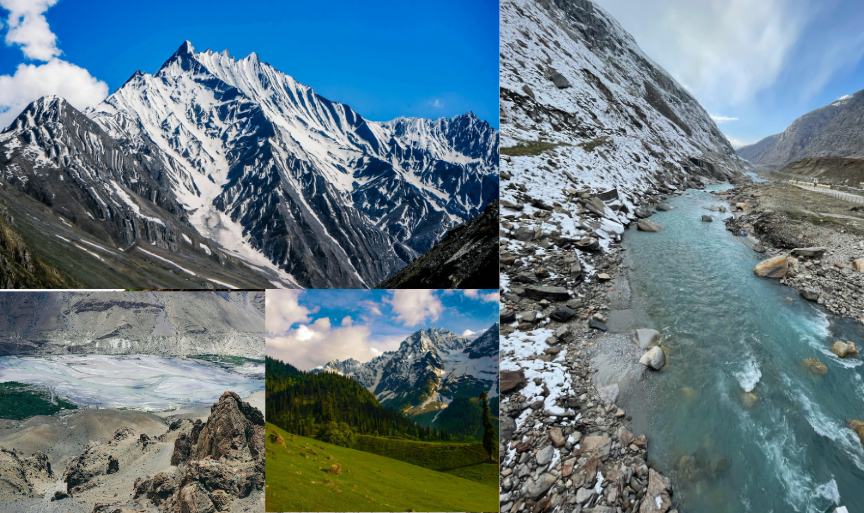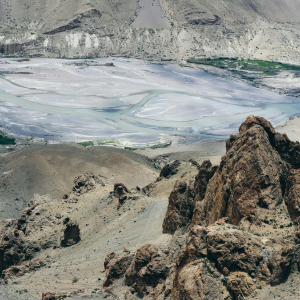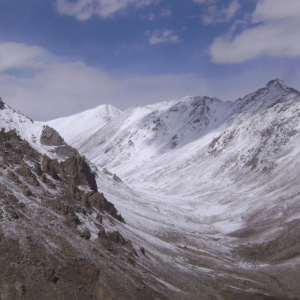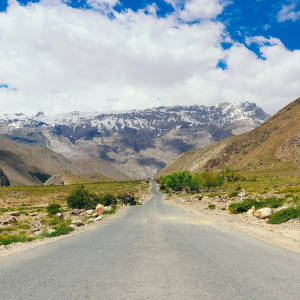Spiti Valley is unlike any place I've ever visited—its stark beauty and serene atmosphere left me speechless. From the moment I arrived in Kaza, the landscape felt otherworldly. Surrounded by towering mountains, ancient monasteries, and clear blue skies, it was as if I had stepped into a forgotten world.The highlight of my trip was visiting the Tabo Monastery, which is not only a marvel of Tibetan architecture but also holds the essence of Buddhist spirituality.
- Home
- About Us
- International
- Africa
- America
- Asia
- Australia & New Zealand
- Europe
- Middle East
AfricaEgypt
Mauritius
Zimbabve
AmericaAsiaAustralia & New ZealandEuropeCentral and Eastern Europe
Highlights
Mediterranean Europe
Middle East - Domestic
- North India
- South India
- East and North East
- Rajasthan, West and Central
North IndiaDelhi
Himachal Pradesh
Uttarakhand
Amritsar
Chandigarh
Punjab & Haryana
Uttar Pradesh
South IndiaAndaman and Nicobar Islands
Kerela
Andhra Pradesh
Tamil Nadu
East and North EastAssam
Nagaland
Tripura
Meghalaya
Rajasthan, West and Central - Temple Darshan
- Group Booking
- Blogs
- Contact Us
Sights

Explore Spiti Valley
Spiti Valley, often referred to as the “Middle Land,” is a remote and rugged region in the Himalayas. It lies in the northern part of Himachal Pradesh, India, near the Tibet border. Known for its stark beauty, high-altitude deserts, Buddhist monasteries, and unique culture, Spiti is one of the most captivating destinations for those seeking adventure, spirituality, and solitude.The valley is surrounded by towering peaks, deep gorges, and the flowing Spiti River, which adds a sense of tranquility amidst the harsh surroundings
Places You'll See




Tour Highlights
- Well planned Tour itinerary.
- Kitchen as per your own convenience.
- Best hotels through out the tour.
- Unique tour of Scenic Beauty
- Stay in destinations that have proper facilities like hospitals, Market.
- Our groups are scheduled back to back, which is very helpful.
Tour Itinerary
Spiti Valley
Days Plan
Day 1: Arrival in Kaza (Spiti Valley)
- Arrival in Kaza: Begin your journey from Manali (190 km from Kaza) by road. The drive will take approximately 8–10 hours. You’ll cross the Rohtang Pass and Kunzum Pass.
- Altitude: Kaza is at a high altitude (3,800 meters), so it’s important to rest and acclimatize.
- Evening: Explore Kaza Market and check in to your accommodation. Spend the evening relaxing to adjust to the altitude.
Day 2: Explore Key Monastery & Kibber Village
- Morning: Start the day with a visit to Key Monastery (Kye Monastery), the largest in Spiti. It’s perched on a hilltop, offering stunning views of the valley and surrounding peaks.
- Afternoon: Head to Kibber Village, one of the highest motorable villages in the world. It’s famous for its beautiful landscapes and the Kibber Wildlife Sanctuary.
- Evening: Return to Kaza, enjoy dinner at one of the cozy local cafes, and rest for the night.
Day 3: Tabo Monastery & Dhankar Monastery
- Morning: Drive to Tabo Monastery, which is about 50 km from Kaza. This monastery is over 1,000 years old and houses ancient murals and paintings. It's known as the Ajanta of the Himalayas.
- Afternoon: After exploring Tabo, visit the Dhankar Monastery. Located on a cliff, it offers breathtaking views of the confluence of the Spiti and Pin Rivers.
- Evening: Return to Kaza for the night. You can also visit the Dhankar Lake if you have time and energy for a short hike.
Day 4: Langza Village & Fossil Hunting
- Morning: Head towards Langza, a beautiful village known for its Buddha statue and fossils. The statue overlooks the village and provides panoramic views of the surrounding mountains.
- Fossil Hunting: Langza is also famous for its fossil fields, where you can find fossils dating back millions of years.
- Afternoon: Take a walk through the village and enjoy the peaceful surroundings. Visit nearby villages like Hikkim and Komic (both are among the highest inhabited villages).
- Evening: Return to Kaza for dinner and overnight stay.
Day 5: Chicham Bridge & Spiti River Valley
- Morning: Visit Chicham Village and cross the Chicham Bridge, one of the highest suspension bridges in Asia. The bridge offers spectacular views of the deep gorge below.
- Afternoon: Drive to Pin Valley National Park, known for its unique wildlife, including snow leopards, ibex, and blue sheep. You can take a short trek in the valley.
- Evening: Return to Kaza for a relaxed evening and rest.
Notes:
• 2 passport size photos
• Adult – Original + photocopy of any of the ID proof i.e. Aadhar Card / Driving Licence / Voters ID / Passport
• Child – Original + photocopy of any of the ID proof i.e. Aadhar Card / School ID / Passport
• Infant – Aadhar Card / Birth certificate
• NRI / Foreign nationals – Mandatory Passport + Valid Indian visa / OCI card / PIO card
• Above mentioned ID proof is mandatory at the time of booking and carry the same ID proof on tour as well
Spiti Valley
Tour Details
Hear from Our
Happy Travelers

The ancient murals and manuscripts there made me feel connected to a timeless culture. I also had the chance to trek around Dhankar Lake—standing at the edge of the crystal-clear waters, surrounded by snow-capped peaks, was a moment of pure magic.One of the most striking aspects of Spiti is the warmth of its people. Despite the harsh conditions, the locals have preserved their traditional way of life and were so welcoming.

I ventured through villages like Langza and Kibber, where I saw breathtaking views of snow-covered landscapes and a massive Buddha statue that looked over the valley. The adventure didn’t stop there—I trekked through rugged trails, crossed the famous Chicham Bridge, and marveled at the vastness of the Pin Valley National Park.While challenging, especially due to the altitude and rough roads, the beauty and tranquility of Spiti made every moment worth it.

Best Time to Visit:
- July-August: These months are the peak tourist season. While it’s warm, there is also a chance of occasional rainfall, especially in the Manali to Spiti route, which can cause landslides. However, the landscape is lush and beautiful.
How to Reach:
1. By Air
Nearest Airport: The closest airport to Spiti is in Bhuntar, about 245 km away from Kaza (Spiti’s largest town). Bhuntar is in the Kullu Valley and can be accessed via flights from Delhi or Chandigarh.
- From Bhuntar, you can hire a taxi or take a bus to Kaza. The journey from Bhuntar to Kaza will take around 6–7 hours by road.
2. By Train
- Nearest Railway Station: The nearest major railway station is Joginder Nagar (in Kullu), about 250 km from Kaza. However, this station is quite far from Spiti, and the train services are limited.
- Alternatives: You can travel to Chandigarh or Pathankot, which have better rail connectivity, and then proceed by road to Spiti Valley
By Road
From Manali:
The most common and scenic route to Spiti is from Manali (about 190 km from Kaza).- Route: The journey involves crossing the Rohtang Pass (3,978 meters) and Kunzum Pass (4,551 meters), which are both high-altitude passes. The roads are rough and windy, so be prepared for an adventurous ride.
Importance of Spiti Valley
Tibetan Buddhist Culture: Spiti Valley is a significant part of the Tibetan Buddhist circuit, and its monasteries, festivals, and daily life reflect the deep-rooted Buddhist traditions.Ladakh and Tibet Connection: Spiti shares cultural ties with Tibet and Ladakh. It is home to Buddhist monks, lama communities, and traditional practices that have survived for centuries, contributing significantly to the preservation of Tibetan culture outside of Tibet.

Book Now and embark on your next unforgettable adventure
With our team of seasoned travel experts and local guides, we ensure that each trip is crafted to perfection, tailored to your preferences, and filled with unforgettable memories.



